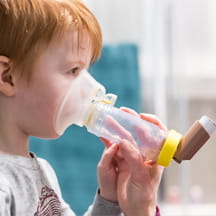Dayton Children’s Hospital reviewed behavioral health unit readmission data to determine causes and apply interventions to decrease readmission rates.
Challenge
With 212 kids waiting for beds on its inpatient behavioral health unit in March 2023, Dayton Children’s Hospital had to find a way to increase capacity. Reducing readmissions to the unit offered a potential solution.
The unit’s 10.1% readmission rate was in line with the benchmark range of 8-14%, but it could be decreased further, said Kelly Blankenship, DO, associate chief medical officer of behavioral health at Dayton Children's.
“We took a step back and said we need to have a strategy because the behavioral health need is huge and it is not going anywhere,” Blakenship said. “We looked at what we have to do now in the community and what we are we going to need in the future.”
Solution
The hospital reviewed readmission data to find ways to decrease the seven-day and 30-day readmission rates on its behavioral health unit.
Blankenship, along with content expert Katherine Winner, MD, and Chief Medical Quality Officer Kelly Sandberg, MD, MSc, reviewed charts to determine why patients were coming back to the behavioral health unit. The primary reason for readmission was intrafamilial conflict. Environmental, social, custody, and medical factors were secondary reasons.
“We had all kinds of ideas of what we thought prompted the second visit. We were surprised by the data, and we realized that what we were offering at that time was not matching the causes,” Sandberg said.
Based on the findings of the chart reviews, the team developed four interventions to help address the readmission causes:
- Readmission tracks. Behavioral health therapists provide individualized, bundled interventions when a patient is hospitalized for the second time. This includes care collaboration with existing providers, parent education, links to National Alliance on Mental Illness resources, wrap-around service referrals, partial hospitalization or intensive outpatient treatment referrals, and review of after-care appointments.
- Follow-up phone calls. The guardian receives a phone call within 24 hours of discharge. Follow-up questions include how the child is doing, any questions or concerns on the child’s safety plan, issues with obtaining medications, and any new concerns about getting to the child’s follow up appointment(s).
- Conflict management curriculum for patients and families. Conflict management skills were individually reviewed, integrated into plans, and reviewed with guardians during the safety plan meeting. Patients and families receive training on interpersonal communication skills, healthy boundaries, empathy, and anger management.
- Readmission checklist. The team reviews the readmission track to ensure patients and families receive intervention. The checklist covers adherence to aftercare appointments, journaling pathways, referrals, evidence of care coordination, patient education and resources, review of discharges and aftercare appointments, and discharge follow-up phone calls.
Goals and results
The team exceeded goals for the project by:
- Decreasing seven-day rates by 48.92%. (5.54 to 2.83 per 100 hospitalizations).
- Decreasing 30-day rates by 36.37%. (11.5 to 7.33 per 100 hospitalizations).
Visits to both the emergency department and behavioral health crisis center stayed the same or decreased during the project, suggesting interventions and increased communication with caregivers following a hospitalization impacted other areas.
The article is based on, “Decreasing Behavioral Health Unit Readmissions,” an educational session at CHA’s 2024 Transforming Quality Conference.






